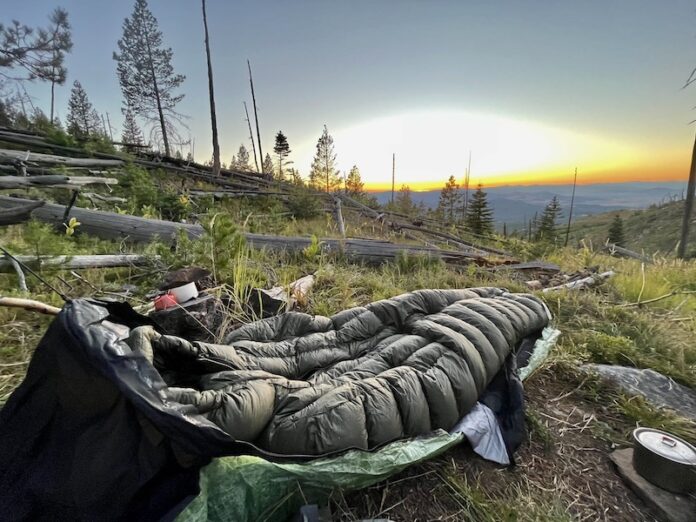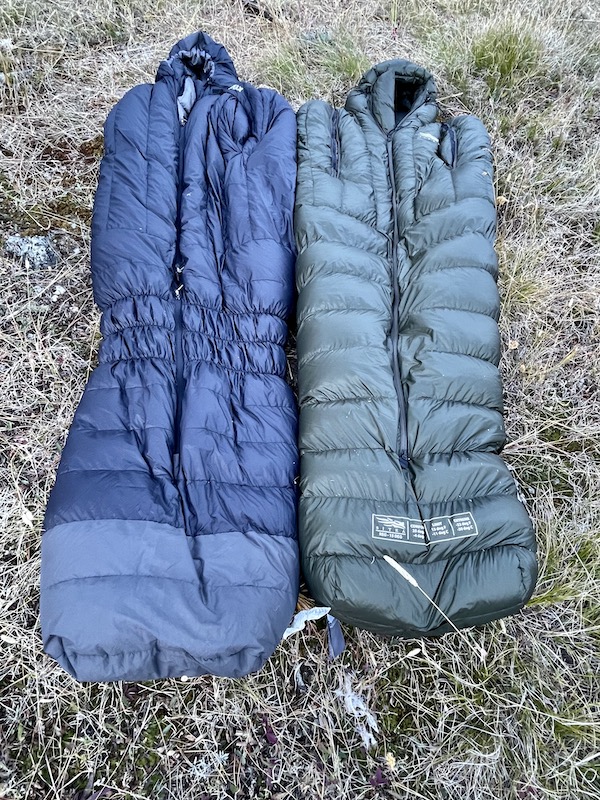
The guys at Rokslide thought it would be interesting to do a direct comparison between the Sitka HyperDown sleeping bag and the Peax Solace sleeping bag. Both have a lot more in common than they do different, but there are some subtle differences, and I’ll try to break things down. Both Peax and Sitka supplied bags to me with no strings attached–I could say what I want in true Rokslide review style.
Peax Solace vs Sitka Hyperdown
They both boast a pretty unique set of features that allow for free hands use without leaving the warmth of your bag. They both also allow the bags to be worn as quasi parkas–think hanging around camp or glassing on a very cold day.
Here’s what Sitka says about their bag –
“A full-body bunker in the depths of winter, the Hyperdown 15 Sleeping Bag is the warmest sleeping bag we have ever made. Best-in-class Allied Down 900-fill goose down sets the standard for warmth-to-weight and packability, while the ExpeDRY treatment provides synthetic-like performance in wet weather. The 15° bag is constructed to accommodate additional layers in your clothing system when the mercury plummets. Thoughtfully placed zippers free your arms to enable glassing or cooking and maximize time spent in warmth that you won’t want to leave behind”.
It can be seen here.
Here’s what Peax says about their bag –
“After 7 iterations of development and testing, we introduce the SOLACE 15—a hunting sleeping bag designed to optimize mountain recovery. Scientific evidence highlights sleep’s pivotal role in decision-making, muscle recovery, focus, and fostering a competitive edge for extended hunts. In essence, better sleep translates to better hunting performance. Solace is defined as comfort in distress, and this sleeping bag ensures reliable physical and mental recovery after the day, becoming the crucial equipment for thriving on the mountain. With the SOLACE 15, experience the comfort you want and the functionality you need to sleep better and hunt better”.
It can be seen here.
Spec Comparison
| Sitka Hyper 15 | Peax Solace 15 | |
| Weight claimed | 2.3 lbs | 2.3 lbs |
| Actual weight | 2.3 lbs | 2.3 lbs |
| Down | 900 ExpeDry | 850 + hydrophobic |
| Down fill | 20.5 oz | 22.1 oz |
| Length (regular) | 77” | 80” |
| Zipper length | 60” (2-way) | 60” (3-way) |
| Shoulder girth | 60” | 62” |
| Hip girth | 52” | 53” |
| Foot girth | 40” | 43” |
| Arm port | 17” | 14” |
| MSRP | $749 | $625 |
Cost and Sizes
The Sitka bag retails for $749; the Peax for $625. The Sitka bags are offered in Regular and Long; the Peax is offered in Regular, Regular Wide, and Tall. I’m 5’10”, 185 lbs., and both the bags I’m reviewing are sized Regular.
Temperature Rating
Both sleeping bags are rated at 15° (Comfort Men) and use high-quality water-resistant down—the Sitka uses 900-rated hydrophobic fill (Gold-infused ExpedDRY), and the Peax uses 850+-rated hydrophobic down. The Sitka has 20.5 oz of fill, and the Peax has 22.1 oz.
Whenever I look at a sleeping bag, I want to know its fill rating and how many ounces of fill it has. I’ll compare those numbers with similarly sized Western Mountaineering and Feathered Friends bags. I’ve used (and still use) several bags of both and have found their temperature ratings to be very accurate. I consider myself a “normal” sleeper in regard to temperature—not overly hot, not overly cool. When I compare both bags, they compare very closely to other 15° bags in regard to fill type and amount.
While the Peax has a couple of extra ounces of fill, I believe that is in most part due to its slightly larger size.
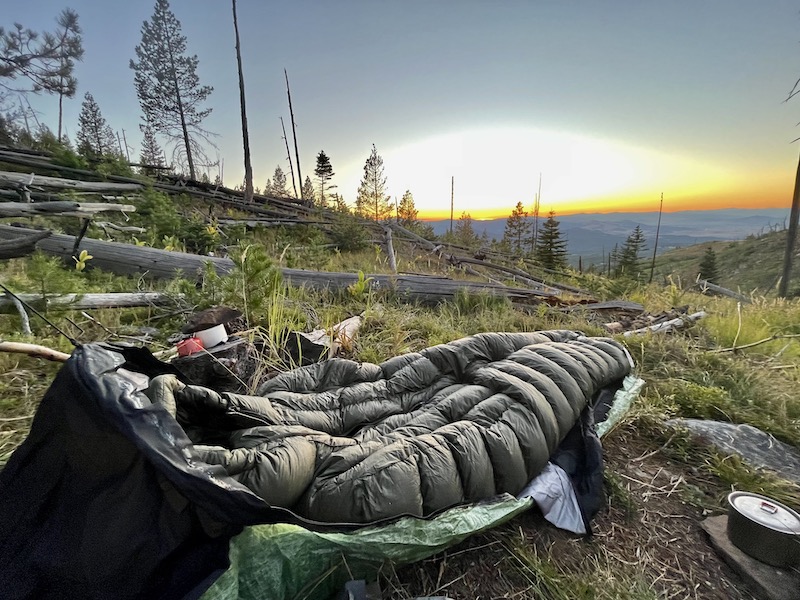
I used both bags on several different trips, but none at their reported comfort level (15 °). It just stayed too warm in the testing window I had. Having said that, I am very (very) confident that these bags will perform as rated based on both the quality/amount of fill and their performance using them down into the 20s.
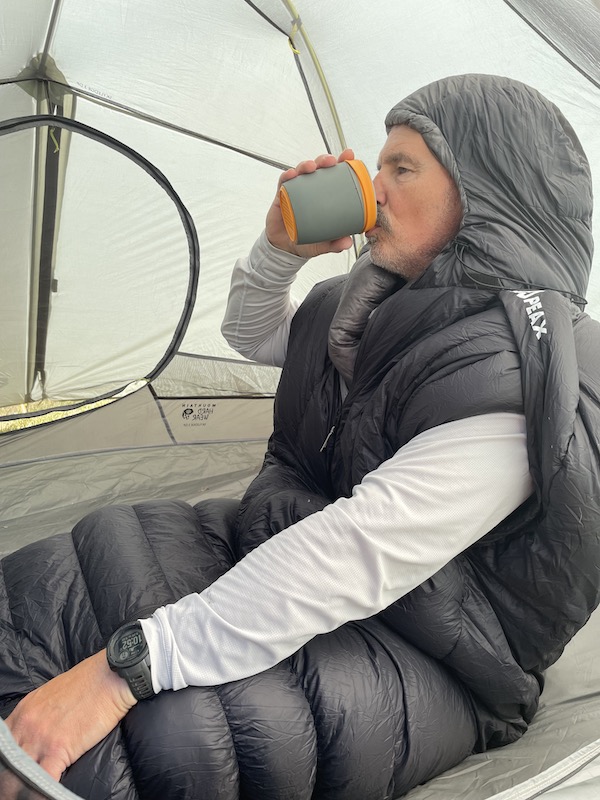
Size and Weight Comparison
Both bags are listed at 2 lbs. 3 oz, both weighed exactly that. That’s not too shabby for a legit 15° bag. Both compress to a relatively small size using a compression sack.
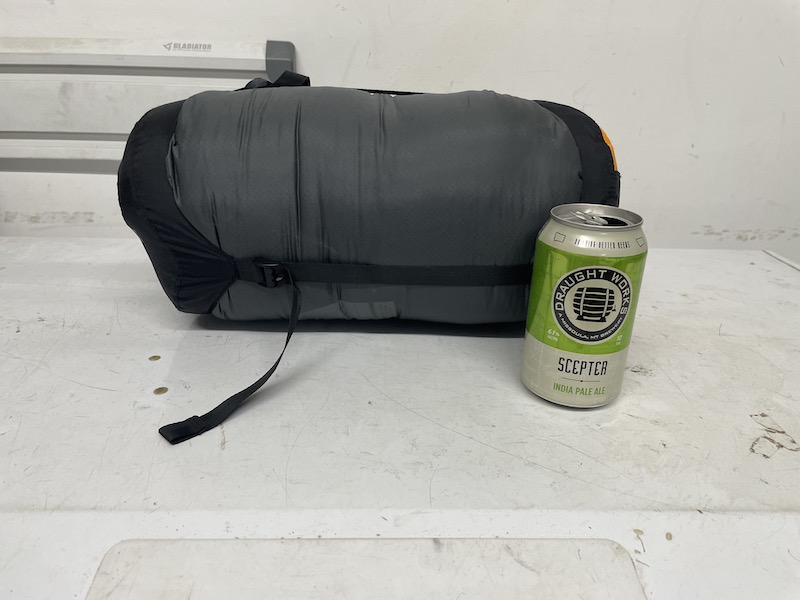
I mentioned the Solace is slightly larger than the HyperDown bag. It’s 3” longer (80” vs 77”) and slightly larger in the shoulder/hip/foot area (see chart). I’m 5’10”, 185 lbs. and found both bags to be more than adequately roomy, but the Solace is slightly roomier. Both have fabric that are very soft to the touch.
Zippers
Both bags utilize a center zipper, which I’ve grown to prefer over a side zipper. With a center zip (combined with a longer zipper), it’s easier to use the bag like a quilt during warmer outings. The zipper length for both bags is 60”—very sufficient for quilt use. The Solace has a three-way zipper, and the HyperDown is two-way. This is the first bag I’ve used that had a three-way zipper, and I can see it could be used occasionally, like when you might want to vent a little mid-body, which this would allow. While both zippers worked well, I found the Peax bag a little easier to zip open/close due to the larger, easier-to-grab zipper tags. Both bags offer generous draft tubes along the zippers, keeping things draft-free.
Hood
Both utilize a “parka” style hood, which is now my preference. It is easier to keep your head in this style hood vs. a traditional hood found on most mummy bags, especially if you are a side sleeper (as I am) and roll from side to side. Both bags allow easy adjustment of the hood.
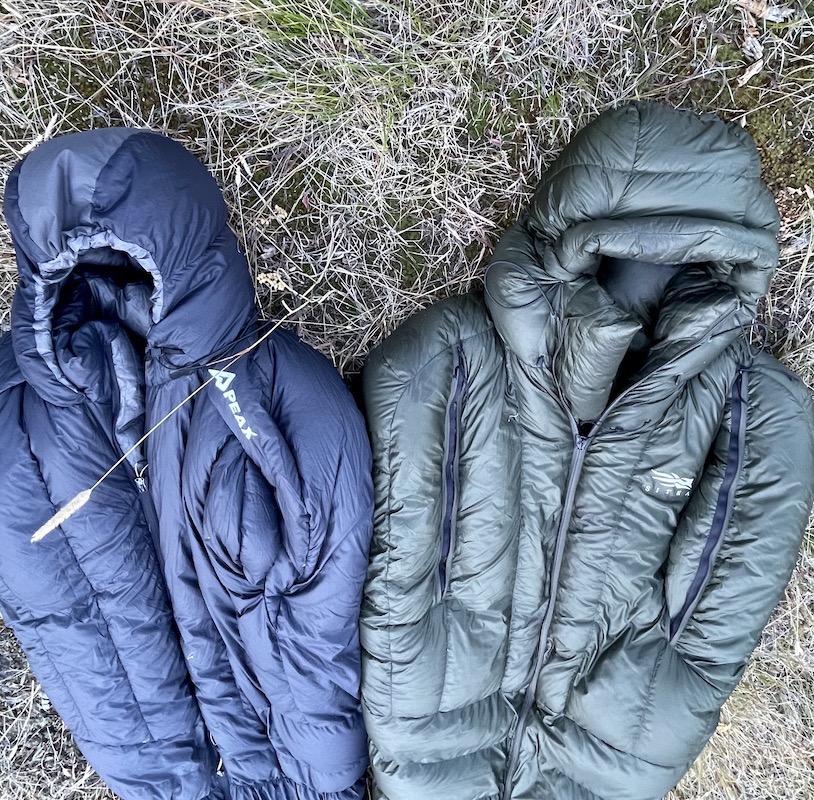
Water Resistance Features
The Peax bag has what I think is a really good idea for the foot box and hood. Those areas both offer a highly water-resistant fabric to prevent soaking when brushed up against wet inner tents. The hood only has a strip of this fabric, which I think could be improved by using this fabric for the full upper portion of the hood.
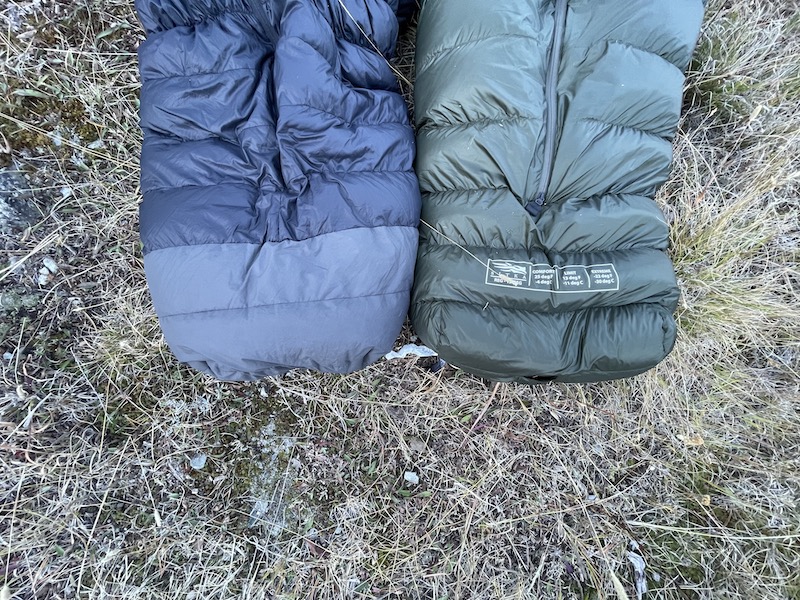
Both bags offer a DWR outer fabric, which helps with the occasional light moisture caused by condensation or very light precipitation blowing in.
Arm Slots
What separates these two bags from other bags is the ability to stick your arms out without unzipping your bag. The more I use these bags the more I think this is a great idea. Need a drink in the middle of the night, a snack, or want to adjust your pillow? —simply stick an arm (or both arms) through the provided slots and voila! Want to cook your breakfast (or supper) from the comfort of your sleeping bag? No problem.
Both bags have slits that allow for this use. The Sitka has two zippered slits that, once unzipped (from inside the bag), allow this. The Peax bag uses a slot sans zipper—but with a self-closing baffle (and draft tube). The Peax makes getting an arm(s) out easier without the zippers, and I never noticed any problems with drafts entering the bag. If a person was cowboy camping and the wind really picked up, the zipper setup will likely be more windproof.
The Peax slit/port measures 14” long, and the Sitka zippered port measures 17”. I preferred the longer length as I’m pretty inflexible, and it just made it easier to get an arm out.
Parka Conversion Option
The other feature both bags have is the ability to use the bag as an outer garment. Both are easy to deploy—unzip the bottom half of the bag and then, using the toggle/hook, pull the bottom of the bag inward and attach it to the provided loop. They differ in that the Sitka attaches lower (~ knee level) and the Peax higher (~ waist level). The Sitka offers a little longer coverage that way, but the Peax is closer to parka length and, thus, easier to move around in when standing.

Conclusion
These are two really high-quality bags that offer features not found in many other bags. They also both offer quality construction and quality materials and are lightweight while still being very warm. If you’re looking for a sleeping bag that does double duty as an additional layer for glassing or around camp, in all honesty, I would be very happy with either bag. If Robby and Justin held a stapler to my forehead and made me pick a winner, I’d choose the one I could find on sale for the lowest price. They’re really a toss-up (save that the big guys might need the extra room in the Peax).
Comment or ask Mike questions here.
*Peax and Sitka are Rokslide advertisers














